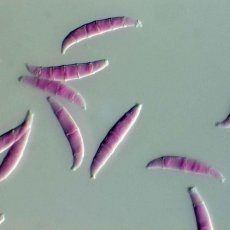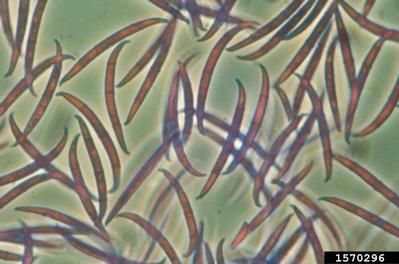Fusariums - pathogens of fusariosis
Last reviewed: 23.04.2024

All iLive content is medically reviewed or fact checked to ensure as much factual accuracy as possible.
We have strict sourcing guidelines and only link to reputable media sites, academic research institutions and, whenever possible, medically peer reviewed studies. Note that the numbers in parentheses ([1], [2], etc.) are clickable links to these studies.
If you feel that any of our content is inaccurate, out-of-date, or otherwise questionable, please select it and press Ctrl + Enter.

Morphology and physiology of fusarium
Fungi of the genus Fusarium form a well-developed mycelium of white, pink or red color. There are microconidia, macroconidia, rarely chlamydospores. Macroconidia multicellular fusiform-falcate. Microconidia oval pyriform. They grow on Czapek's medium in the form of fluffy colonies.
Pathogenesis and symptoms of fusariosis
Mushrooms are widespread, especially on plants. In persons with immunodeficiency, fungi can affect the skin, nails, cornea and other tissues (F. Moniliforme, F. Sporotrichiella, F. Anthapitum, F. Chlantydosporum). Develop a fever, there are rashes. Foci of lesion are localized mainly on the limbs.
At low temperatures, F. Sporotrichiella, producing mycotoxin, develops on cereals. The use of such cereals, which overwintered under snow, causes mycotoxicosis. Mycotoxicoses are also caused by the use of grain products. There is a defeat of the central nervous system with a violation of coordination of movements.
Microbiological diagnosis of fusariosis
Explore nails, skin, subcutaneous tissue, cornea, blood, the tip of the permanent catheter, vomit, feces, tissue biopsy. Isolate the fungi and determine their toxins. Apply RIF. On nutrient media grow fluffy or cotton-like colonies of white color, which as they grow older become lilac-blue, pink-red, yellow or green. Fungi form a mycelium, micro- and macroconidia. Old cultures can form chlamydospores. Sometimes put PTSR.



 [
[